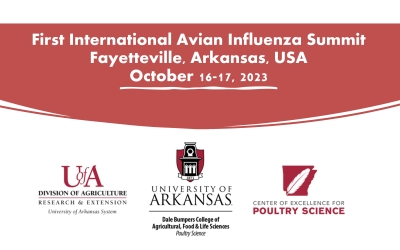Control strategies for 2.3.4.4 highly pathogenic avian influenza virus - From vaccines to host disease resistance
Authors: Darrell R. Kapczynski
GMPC TOP
2023.
vol. 3, Iss. 1
pp:0-17
Doi: https://doi.org/10.51585/gtop.2023.1.0020

Abstract:
Avian influenza virus (AIV) is a highly contagious and lethal disease that can have major impacts on the global poultry industry and food supply. While more frequent in Asia and Europe, highly pathogenic avian influenza virus (HPAIV) outbreaks have traditionally been rare in the U.S. However, in recent years, the U.S. has seen an increase in the incidence of HPAIV outbreaks in wild birds and commercial poultry. In 2014/2015 and in 2021/2022, outbreaks of HPAIV subtype H5NX clade 2.3.4.4 resulted in the death and destruction of over 50 million birds, each costing billions of dollars to the U.S. economy. Here, we present a comprehensive overview of control strategies against the 2.3.4.4 HPAI virus, encompassing both vaccination approaches and host-driven disease resistance mechanisms. The first section outlines the advancements in vaccine development tailored specifically for the 2.3.4.4 HPAI subtype. Through a critical analysis of experimental studies and field trials, we discuss the efficacy, safety, and cross-protection capabilities of various vaccine formulations, including inactivated whole-virus vaccines, vector-based platforms, and novel recombinant technologies. Furthermore, this section explores the challenges associated with vaccine design, including strain diversity, antigenic differences, and logistical hurdles in large-scale vaccination campaigns. The second section delves into host-centric strategies aimed at enhancing natural resistance against 2.3.4.4 HPAI virus infections. Because vaccines are not currently approved for use in the U.S., control strategies for HPAIV are dependent on biosecurity and culling of infected flocks. New strategies for HPAIV control based on gene editing of poultry species could offer solutions for disease control. Two different strategies for improving disease resistance to HPAIV are based on enhancing the innate immunity of the bird and targeting the viral RNA genome inside the cell. By harnessing genetic engineering techniques, including CRISPR/Cas-9 or -13, natural resistance to avian influenza can be achieved in poultry. Taken together, we will examine the current basis of control strategies for the 2.3.4.4 HPAI virus, offering insights into the strengths and limitations of both vaccination and novel gene-editing technologies to enhance host disease resistance to HPAI. By expanding our toolbox, this work contributes to the ongoing efforts to mitigate the impact of 2.3.4.4 HPAI on global poultry industries and public health.
Keywords:
HPAI, CRISPR/Cas-9, 2.3.4.4 HPAI, Control strategies, Host disease resistance
Statistics:
Article Views: 449
PDF Download: 6